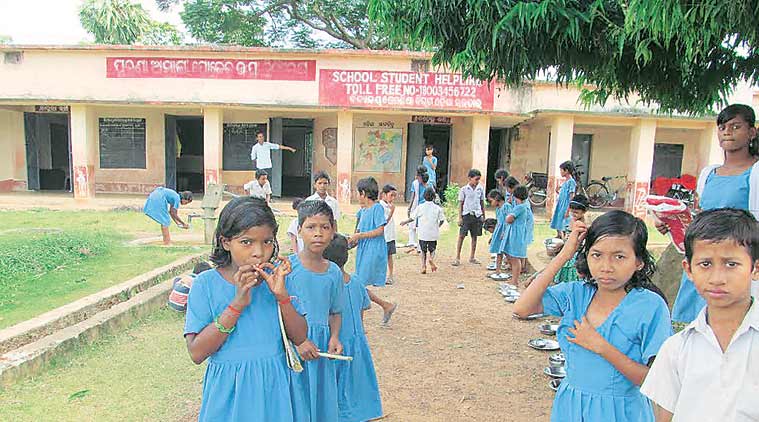 Prof Satya Narayan Misra in Bhubaneswar, February 3, 2024: While the interim budget of Nirmala has to be complimented for its continued focus on infrastructure investment and will to contain fiscal deficit, its surprising lack of mention of its intent to usher foundational learning and vocational education in government schools, inadequate allocation to improve health care infrastructure, contain rising anemia levels among children and women is extremely disappointing.
Prof Satya Narayan Misra in Bhubaneswar, February 3, 2024: While the interim budget of Nirmala has to be complimented for its continued focus on infrastructure investment and will to contain fiscal deficit, its surprising lack of mention of its intent to usher foundational learning and vocational education in government schools, inadequate allocation to improve health care infrastructure, contain rising anemia levels among children and women is extremely disappointing.
While it leaves no stone unturned to decry the Congress government on every count, it fails to realize that be it HDI (Human Development Index), GII (Gender Inequality Index), GHI (Global Hunger Index), its track record in the human development parameters, IMR (Infant Mortality Rate), MMR (Maternal Mortality), MDPI (Multi-Dimensional Poverty Index) and women representation in Parliaments it continues be equally unedifying. Like a bad workman quarrelling with his tools, the Modi mandarins find flaws with the data from these independent agencies or hounds officials at the helm of organizations like IIPS bringing out the disquieting discourse on hunger and nutrition in their NFHS V report.
First, the genuine achievements of the government must be put on record. From 12% allocation to capital expenditure out of total central government expenditure during the Manmohan budget (2012), it has now gone up to 23% under Modi. As % of GDP, it has swelled from 1.7% to 3.4% of GDP as recommended by the Deepak Parekh Committee, a decade back. The prime beneficiaries in this allocation priority have been roads, railways, and defense.
The 2023-24 budget witnessed a whooping increase of 23% over the previous year’s budget and this year 11%. This will have a Keynesian multiplier effect, in terms of overall output increase and generation of additional employment. The allocation for the MNREGA program, which creates work and ensures minimal livelihood for nearly 113.7 million households who are unskilled workers is praiseworthy. The allocation was nearly 40% above the previous years.
 The carping critics must note at the height of Covid 19 and the massive migration of nearly 50 million workers, the FM put an additional allocation into MNREGA to bail out these beleaguered migrants. Besides 10.11 Cr free gas to women (Ujjwala), 11.72 toilets (Swachh Bharat), tap water to 10.82 cr households (Jal Jeevan), 6.27 Cr poor families having hospital care under the Ayushman Bharat scheme and 2.6 cr pucca houses built are humongous achievements.
The carping critics must note at the height of Covid 19 and the massive migration of nearly 50 million workers, the FM put an additional allocation into MNREGA to bail out these beleaguered migrants. Besides 10.11 Cr free gas to women (Ujjwala), 11.72 toilets (Swachh Bharat), tap water to 10.82 cr households (Jal Jeevan), 6.27 Cr poor families having hospital care under the Ayushman Bharat scheme and 2.6 cr pucca houses built are humongous achievements.
While many of these programs were mooted during the UPA regime, they were moribund and galvanized and energized during Modi’s decade-long governance. While the budget claims that 25 cr people have moved out of the MDPI, the SDG report says that 21.3% are still suffering from malnutrition, 26.2% are deprived of clean cooking fuel, and nearly 24.6% have poor sanitation. Chronic malnutrition and poor sanitation are the prime causes of stunting among children (34.7%).
Even amongst the comity of underdeveloped countries like Sub-Saharan Africa India is very lowly positioned. The NFHS survey our 50.4% of women are anemic. The HDR (2022) report says India’s MMR is as high as 137 out of 1 lakh, which most developed countries have single digits. IMR is still very high at 28.3 per 1000 which is way higher than single digit in most developed countries.
This is despite the Constitutional mandate in Article 47 that it is the duty of the state ‘to raise the level of nutrition ‘and Article 15(3) which enjoins upon the state ‘to make special provision for women and children’. While there have been a slew of programs geared to supplementary nutrition requirements of children and pregnant and nursing mothers under Indira’s ICDS in 1975 and lately under Modi under Poshan (2019), the allocation to Women & Child development program is a measly Rs 25848 cr), .4% increase over previous budget, the picture is equally disturbing in the Poshan program, where the allocation is only Rs 15047 Cr, a .4% increase over previous year.
Sadly, the allocation to Anganwadi Centre (22 Lakh) catering to nutrition, basic health care, and early childhood education and care if children accounting for 70 million children and 10 million pregnant and nursing mothers has been brought down from Rs 21948 cr to 21200 cr for next year. If inflation of around 6% is taken into account, there is a real dip in the allocation of critical nutrition intervention programs. Quite clearly nutrition is a low priority area for Mr Modi, despite the rhetoric for Aneamia Mukt Bharat and bolstering Nari Shakti!!
In the budget 2022-23, Mrs Sitaraman had promised to upgrade 2 lakh Anganwadi Centres. There was no commensurate budget to resuscitate the rickety and leaky Anganwadi Centres. In the present budget, there is a repeat of the same promise without any additional allocation. The gap between intent and allocation could not have been more glaring and ironical.
 The saddest omission in the budget is its lack of any reference to the wonderful NEP 2020 which sets a credible road map for foundational learning, vocational training, and early childhood education. One of the ironies of the 86th amendment to the constitution in 2002 was to make schooling from the age of 6-14 a fundamental right (21A) and early childhood education, a non-justiciable directive. The NEP rightly notes the dismal early childhood care and education and suggests proper training of the Anganwadi workers and improvement of infrastructure and ensures that foundation learning in terms of elementary reading, writing, and numeracy is ensured by the child reaches grade 3 by 2025.
The saddest omission in the budget is its lack of any reference to the wonderful NEP 2020 which sets a credible road map for foundational learning, vocational training, and early childhood education. One of the ironies of the 86th amendment to the constitution in 2002 was to make schooling from the age of 6-14 a fundamental right (21A) and early childhood education, a non-justiciable directive. The NEP rightly notes the dismal early childhood care and education and suggests proper training of the Anganwadi workers and improvement of infrastructure and ensures that foundation learning in terms of elementary reading, writing, and numeracy is ensured by the child reaches grade 3 by 2025.
This is in the backdrop of scathing ASER survey reports which point to very low levels of foundational learning. The latest ASER 2023 also brings out how very vocational training is being imparted in vocational training for students in the age group of 13-16. This was a major recommendation by the NEP. While gloating over the increase in the number of IITs and IIMs, Nirmala conveniently forgets that without quality school education our hopes of reaping demographic dividend through a young working population can be a disaster, without the foundation of quality learning at the government school level, which the bottom 50% of Indian parents can afford.
The allocation to school education has gone down from Rs 54100 cr last year to 57427cr cr next year, an increase of less than 6%. Education expenditure as % of GDP remains around 3% against the recommendation of the Kothari Committee to 6% way back in 1966 and reiterated by the NEP 2020. Prof Sen keeps on harping on improving access to quality education as part of their fundamental right and giving priority to 6% allocation of GDP to education. It has fallen on deaf ears, from Socialist Nehru to Free market Modi, as brought out by Ashoka Mody in his insightful book “India is Broken”.
Allocation against Health missions also shows a similar depressing trend, from Rs 47347 Cr to Rs 42281cr for next year. The irony of Nirmala’s budget is a complete misalignment between allocation between economic infrastructure and social infrastructure. This structural mismatch needs to be fixed, if India aspires to the envy of the world beyond the highest GDP growth rate.
Prof Misra is a leading development economist of Odisha



Leave a Reply
Be the First to Comment!